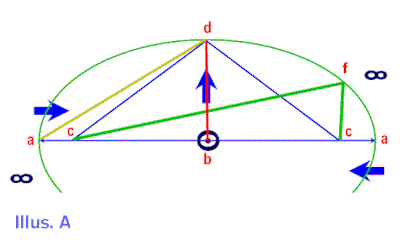 |
| Riemann
was one of the finest pure mathematicians of his century.
...within his mind burned the desire to understand the nature of the
physical world... Anticipating relativity and modern cosmology, Riemann understood that in order to grasp the meaning of the physical world, one had to develop a deep understanding of...geometry. Amir D. Aczel [circa 1953- ] -God's Equation, 1999 |
The general theory of relativity
splendidly justified his (Riemann's) work. In the mathematical apparatus developed from Riemann's address, Einstein found the frame to fit his physical ideas, his cosmology, and cosmogony: and the spirit of Riemann's address was just what physics needed: the metric structure determined by data. Hans Freudenthal [1905-1990] -Dictionary of Scientific Biography, 1970-90 |
| Seminal
motion manifests as an elliptical pulse, which is described by the
Brunardot Series. The Brunardot Series is unique in that it defines ellipses, which determine the Conceptual Unit . . ."One," 1, which is referred to as "the Proof of One." The Brunardot Series, additionally, locks together Phi, F, the Golden Ratio, and the Fibonacci series, while completing said Fibonacci series by disclosing two additional terms. |
||
|
|
Brunardot Ellipse |
|
|
|
Summery: The value of any term of the pulser defines a Brunardot ellipse.



|
|